YA Novels and their Modern Leading Ladies
What is the ‘modern girl’ like? Is she wise beyond her years? Is she plain, but pretty? Is she constantly the object of heterosexual male lust? Readers of young adult (YA) novels would not be blamed for believing any of the above.
In contemporary YA fiction, female protagonists have become hugely prevalent. In theory, this should make stories written in this genre more relatable and attractive to their audiences, particularly the young women in their audiences. However, across many YA novels, the female leads are largely the same. More often than not, they are strong, both in terms of their physical abilities and their personalities, and a blossoming romantic relationship with a boy is almost always an integral aspect of their narratives. These tropes are common and even expected in YA novels. But while such tropes may sell books, they are not representative of all teenage girls.
Why are female characters forced into tropes?
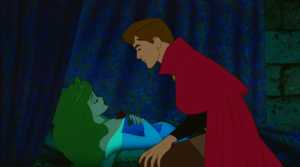
Characters in popular fiction need to be dynamic. They need to have an interesting backstory and distinctive, somewhat overplayed personality traits, otherwise they risk falling through the cracks of the narrative and becoming unnoticeable. For too long, female characters in children’s and YA stories suffered exactly this. They were passive damsels in distress whose only prominent or mentionable characteristic was their physical appearance and who demonstrated a stereotypical and simplistic femininity. The popular fairytale Sleeping Beauty is a notable and long-famous culprit of this. Originally written by Charles Perrault and published in 1697, this story follows a young princess whom an evil fairy curses to one day prick her finger on a spindle and die. The curse is partially reversed by a good fairy so that instead of dying after pricking her finger, the princess will fall into a 100-year slumber only to be woken by the kiss of a prince. Not once in Sleeping Beauty does the female protagonist exhibit a sense of agency or control over her life. Her trajectory is defined and saved by others, leaving her unable to express how she feels about the events she experiences.
It is understandable that modern and contemporary YA authors have felt the need to fit female characters into tropes. While in older stories, female protagonists were the products of their narrative and had no strong character traits, many of them now have distinctive stories and personalities. However, when the aspects of a female characters are exaggerated and repetitive, the characters become unrealistic, which has proven to frustrate readers and critics of this genre.
The ‘Strong’ Female Character
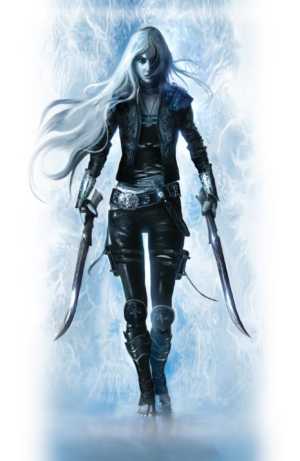
A pattern amongst the leading ladies of YA novels is their embodiment of the ‘strong female character’ stereotype. In the blurb of Sarah J. Maas’ YA Fantasy novel Throne of Glass, it is said that its 18-year-old female protagonist Celaena Sardothien is ‘Beautiful. Deadly. Destined for greatness.’ Even just from this, the reader immediately gets an idea of Celaena’s character. Or do they? The characteristics of ‘beautiful’, ‘deadly’ and ‘destined for greatness’ barely scratch the surface of what a character is really like. But as the novel progresses, it is clear that this is as deep as Celaena’s character gets. Indeed, Celaena is ‘strong’: she is, after all, an assassin. However, it quickly becomes apparent after the first few chapters of Throne of Glass that her personality is one-dimensioned. The third-person narration says that Celaena was once a prisoner and the victim of hardship not to be wished upon one’s worst enemy and yet, Maas depicts her throughout the novel as brave, quick-witted and largely unfazed by her traumatic past.
Tris, the 16-year-old protagonist of Divergent by Veronica Roth, suffers from the same limited characterisation. She is also physically strong, brave and independent and while there are some occasions when she shows how her experiences have affected her, however such moments are few and far between and often overshadowed by her will to take risks. Moreover, Tris’ personality throughout most of Divergent is flat and one-dimensional and it is difficult to make sense of her values and how she feels about her relationships.
The ‘strong female character’ trope sends a message out to girls similar in age to Celaena and Tris that they would be more attractive if they refrained from showing how their experiences and relationships have shaped them emotionally. They may feel that they have to have mask their true feelings with an air of feistiness and flirtatiousness when, in reality, this may not be possible for all young girls.
The Heteronormative Love Story
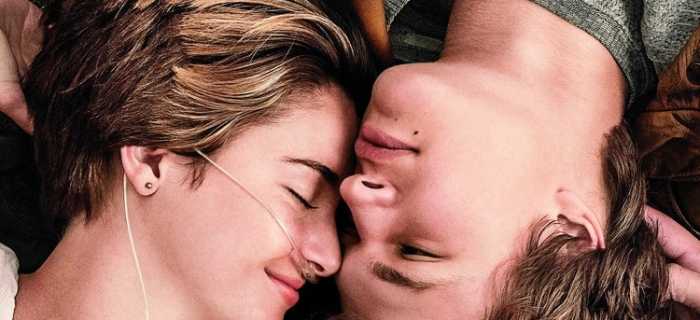
A romantic relationship with a boy is a prominent plot point of several female-led YA novels. The Fault in Our Stars, John Green’s highly popular YA novel, centres around a heterosexual love story which defies all odds. Hazel, the novel’s female narrator, is a 16-year-old sufferer of cancer whose story in and of itself could have provided the bulk of the narrative. The novel could simply have been a survey of how such a young girl copes with experiencing such an intense struggle in her life. Instead, Hazel’s story is complicated when she meets Augustus, another sufferer of cancer, whom she inevitably falls in love with and whose presence overshadows that of Hazel’s sickness as the most important aspect of the narrative. He validates her beauty and gives her one more reason to be brave. When (spoiler alert!) Augustus ultimately dies, it is as if Hazel’s story dies with him. She says in her narration that she rated the worst pain she felt a 9 out of 10 because she was saving her 10 out of 10 and that now, this rating is applicable.
Inside Out by Maria V. Snyder is a dystopian novel about a girl named Trella living in the lower echelons of a fictitious society who occasionally enjoys exploring the area where the members of the upper class live. This ultimately causes her to unintentionally start a rebellion amongst her people. This is a unique premise for a dystopian novel and one in which Trella’s character informs the plot, rather than vice-versa. Such intrigue means that the story could have been interesting and enjoyable if Snyder had just left the plot there. However, a notable aspect of the plot is that Trella eventually meets and falls in love with a boy who is from the society’s upper class, making her motives less about her freedom and more about her love for him.
What the importance of a heterosexual romance subplot says to young female readers is that they can only fight against all odds and feel good about themselves with the help of a boy. This has implications for all teenage girls who might not have dated a boy, but especially for LGBTQ+ readers who might not be attracted to boys. As such, a heteronormative love story may not have a place in all YA novels.
What about racial and sexual diversity?
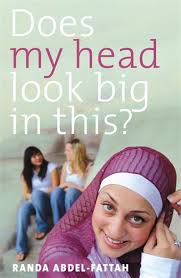
There are a select few popular YA novels which include women of colour and queer women and even fewer in which these women are the protagonists. This effectively demonstrates not only the lack of realistic portrayals of women in YA fiction, but also the whitewashing and heteronormativity that is still pervasive in this genre. If a reader of YA who is queer or a person of colour reads too many novels that lack diversity, they will be unable to identify with these stories. YA novels which address racial and sexual differences are necessary to ensure that this genre appeals to a wide and diverse teenage audience.
The novels by Australian author Randa Abdel-Fattah are counterexamples of this. A Muslim woman of Egyptian and Palestinian descent, most of Abdel-Fattah’s YA novels centre around teenage girls who also come from a Muslim family and their experiences of growing up in Australia.
Van Uoc Phan, the main character of Cloudwish by Fiona Wood, is a second-generation Vietnamese immigrant living in Australia. As a character, she has both agency and complex and the novel explores a variety of issues that arise from being from a migrant family, such as class, racial conflict and social isolation.
Although there are some well-written novels which explore the lives of young women of colour, these are uncommon and often relatively unknown. Queer women arguably suffer even more greatly in this way. Carry On by Rainbow Rowell is a fantasy novel with a gay male protagonist named Simon. Penelope, one of Simon’s sidekicks is a mixed-race women of colour and Baz, another young gay man, is arguably the most important character in the novel with the exception of Simon himself. However, despite this diversity and detailed exploration of a romantic relationship between two young men, YA novels led by young queer women often go under the radar.
What makes a good female character?
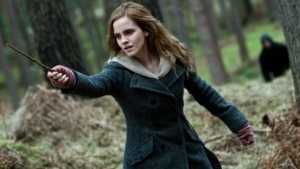
In order for the female protagonists in YA novels to be relatable to as many of their readers as possible, they need to be versatile. They need to be complex. They need to have agency derived from within, not from a potential boyfriend.
Natasha Kingsley, the female protagonist (and a woman of colour) of The Sun is Also a Star by Nicola Yoon, first comes across as rather cold, basing her opinions only on science and refusing to believe in the power of art. However, the reader eventually discovers that her overtly applied logic is a result of her father’s inability to make his own dreams of becoming an actor a reality. By the end of the book, Natasha receives adequate character development in that she no longer believes that passion and idealism are useless. While Natasha has a love interest in the form of Daniel Bae, this love story is not one-sided; the first-person narration is equally split between both characters, implying that Daniel needs Natasha as much as Natasha needs Daniel. In addition, there is much importance placed on Natasha’s intelligence and ambition for a future career.
Alba from The Incredible Adventures of Cinnamon Girl by Melissa Keil is self-assured and interesting without the help of a boy. When her best friend Grady ultimately expresses his attraction towards her, she is not surprised by the fact that she could possibly be an object of desire but instead, by the simple fact that someone who has platonically loved her for years now loves her romantically. Even then, this plot point is unimportant compared with the novel’s central themes of coming of age and fearing the future.
Inej, one of the main female characters of Six of Crows by Leigh Bardugo is a young woman with extraordinary physical capability. However, this is not done at the expense of complex characterisation. Throughout the novel, Inej is seen to be brave and loyal, but to also carry the burden of her past and to constantly be fearing her death. Moreover, she at no point in the novel gains a heterosexual male love interest.
Perhaps best of all is Hermione Granger from the Harry Potter series. She is a master of spells, but also a great negotiator. She is strong-willed, but does not shy away from expressing her emotions. It is mentioned several times throughout most of the books in the series that Hermione is the best witch of her generation, clearly emphasising the importance of her intelligence. And despite having a romance subplot with Ron Weasley, this is not even close to being the most important part of her narrative. She is a talented witch as well as a loyal friend, making her one of the most inspirational female characters in YA fiction.
It is possible – and definitely important – for the female protagonists of YA novels to be simultaneously intriguing and relatable. Many YA authors are now attempting to avoid stereotyping their young woman characters and in particular, leaving them without a heterosexual male love interest. As long as this continues to occur, YA novels will be able to resist the stereotyping and heteronormativity of their leading ladies.
What do you think? Leave a comment.
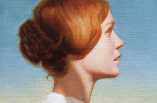
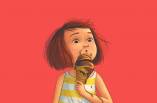
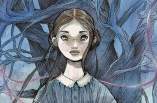
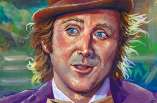
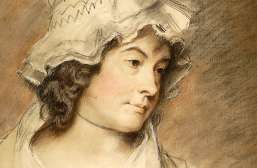
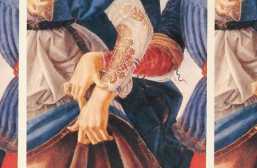
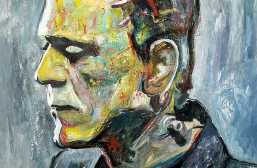
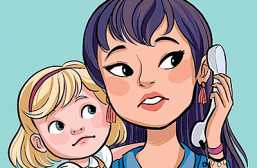
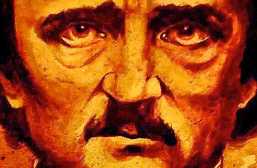
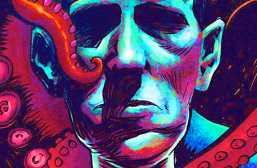
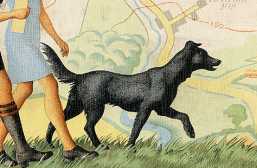
Great article. I first discovered Tamora Pierce when I was about 9 or 10; this headline made me think of her writing instantly. The realms she creates may be fantastical, but her characters have a wonderful veracity to them – their reactions, speech, passions and development are totally relatable and accessible.
Her Song of the Lioness quartet was one I revisited again and again at the local library, buying my own copy of the final instalment (which, coincidentally, will finally form part of the complete set this week) and devouring the action. Alanna (the protagonist) is a cross-dressing, sword-wielding, headstrong girl who navigates plenty of physical and emotional challenges throughout her journey.
Upon our first encounter, Pierce’s engaging and pragmatic style made it seem totally natural for a series with a strong female character as the lead. It’s only looking back that I realise how revolutionary such stories can be.
One book I love to buy for friends and relatives girls is The Changeover by Margaret Mahy.
Yes! Most, if not all of Pierces female characters are very strong and empowering.
Daine from the Immortals series is a personal favourite.
I always wanted to be Bonnie in the Wolves of Willoughby Chase. Total disregard for the way girls were supposed to behave – quiet, well-groomed and respectful of all their elders – but still fiercely loyal and kind.
And Dido, what about Dido? She stood absolutely no nonsense!
Yes, Bonnie and Dido. Absolutely. Recently re-read the Cuckoo Tree, and it’s still magical.
Great feminist perspective with a strong rundown of topic. Thanks for writing and sharing.
I would say that writers are becoming increasingly aware of how important gender representations are. There is also an increasing demand for diversity amongst fiction. The only issue with diversity is the question of appropriation. If you are a white middle-class male, for example, writing about a Muslim teenage girl is like waving a red flag in front of critics. However, I believe that diversity can be incorporated into any story, it just depends on what the story is. I can write a YA novel that happens to have a queer protagonist, but I cannot write a “coming out” story because that is not a story I have access to.
Thank you for suggesting YA novels where the love story isn’t a consuming part of the narrative. One thing I can never get behind YA novels is the need for a love story and the eventual love triangle simply because at 16 years old, the age of most of these protagonist, not all girls will have a romantic interest in anyone yet YA and social media in general makes it seem as if you have to had experience romance and everything that comes along with it by the time you’ve graduated high school, which is completely ridiculous cause that’s not everyone’s story.
As for the topic of racial diversity for a long time I had given up since a lot of stories with a minority at the centre is precisely about the fact that they are minorities as if someone’s race is the one and only thing that defines them. Which always annoyed me. Authors and publishers for that matter need to find a balance where they can tell a story of a protagonist who is a minority and whose race does affect them without it being the only thing their story is about, if that makes any sense.
Hermione in Harry Potter is a favorite. She does get rescued once or twice I think (been a while) but she’s also strong, brave, smart, resourceful and more than a match for any of the male kids in the story IMO.
Also, not books, but I’ve quite impressed with Disney’s recent characters like Anna in Frozen, Moana and also Rey in Star Wars TFA. Not saying they’re perfect, and Disney do have a fair number of less positive examples in their past too, but I thought all 3 of them were good examples of strength, independence and depth.
There’s a reason both Harry and Ron keep telling her she’s brilliant.
I agree that Hermione in Harry Potter is a good call (though I have a soft spot for Luna Lovegood too). And if the readers go via Hermione in the books to the films and to Emma Watson as a real-life role model for empowerment, then so much the better.
For me, the most significant empowering female character in all the children’s literature I have read, of any era, is Tiffany Aching.
Great piece. I favor pretty much any main character in a Frances Hardinge novel!
I would highly recommend the Alex quartet of books by Tessa Duder, about a young female swimmer trying to qualify for the Olympics. Probably stayed with me more than anything else I read as a teenager.
Maybe not modern protagonists, but I always loved the Paper Bag Princess, but I’m a few decades out of date.
I give the Paperbag Princess as a gift to every little girl born to my friend’s or family. It’s the exact kind of message I want them to grow up with. You’re smart enough to outsmart a dragon, no boy can ever tell you aren’t good enough and having beautiful things isn’t everything because you can achieve all that in a paper bag!
Mary Lennox in The Secret Garden. First book I was ever given.
Interesting article, and great choice of characters. I would like to highlight Sabriel and especially Lirael in the books of that name by Garth Nix. Lirael is a great character developed especially in Abhorsen, the third of the trilogy. And Chlor of the Mask is an interesting anti hero(ine) too.
If we’re allowed gendered animals, the Disreputable Dog is brilliantly written.
In other books by the same author Suzy Turquoise Blue is a secondary character but a favourite also.
Since others are posting recommendations, here is mine. ‘The Girl who Circumnavigated Fairyland in a Ship of Her own Making’ by Catherynne M Valente. Again a book/series replete with strong 3D female characters including the protagonist September who goes about saving Fairyland on multiple occasions and her mother who doesn’t feature much but is casually mentioned as being a mechanic. One of the later books in the series features a male protagonist, but includes as his sidekick, Blunderbuss, an animated stuffed wombat who (possibly the best character in fiction) blows all gender definitions out of the water in her exuberant badassery.
For very little ones, I recommend The Paperbag Princess and the wonderful Princess Elizabeth, who outsmarts a dragon to free her boyfriend who when he rejects her as she’s wearing the only thing left unburnt in the kingdom (a paperbag) and then dancing off into the sunset after telling him where to go!
It was one of my absolute favorites growing up!!
There’s lots of quality female protagonists in YA fantasy/sci-fi.
I find nancy blackett interesting… just lived her childhood to the full, regardless of gender stereotyping.
Nancy Blackett is a mover and shaker and leader. She produces all the best and/or wildest ideas.
How about Mary Lennox in “The Secret Garden”. She carries on being herself and rescues Colin as a result.
I love that book. Both Mary & Colin are utter brats but ultimately start bringing the best out of each other.
Pretty much every Jaqueline Wilson character for me…
Good discussion of a complex genre. As the edges of YA keep shifting it is always difficult to pin down what does and does not constitute YA fiction, and in a way that often influences the portrayal of characters. There are some central concerns in the stereotypical presentation of themes and heroines, however, this is a double-edged debate as many would argue this is a just representation of the interests and society of the readers. However, I think YA has a great place to develop more challenging narratives that allow all readers to feel included, not just those that society deem as normal.
Thanks for sharing.
House of Stairs by William Sleator is ahead of its time.
Thank you so much for bringing up that yes, a “strong” female character can also be one-dimensional and, well, boring. I think we’ve been conditioned to admire such characters because well, they’re out there swinging swords. They eschew romance. They’re assassins, for crying out loud!
Then again, what does any of this say about who those women are as *people*? Not much. They’re not allowed to be individuals anymore than Cinderella or Sleeping Beauty or whoever. They too, are products of their environments; those environments just happen to be harsher and tougher than fairytale environments. So then, stories like Game of Thrones posit the question: How to realistically show a strong woman is true to her environment, without making her a product of it? How to balance physical/mental strength in a female YA character while also giving her femininity? Some YA authors are attempting to do this; I’ve seen a series of novels where a proper, cultured Southern belle is the “chosen one” who saves the day. But I think it still feels like a new concept for the genre and its authors.
I totally agree with what you said about Hermione! She’s one of my favorite female characters and is very well developed as you mentioned. In general, great article and choice of characters in your discussion.
Good review. I really like what you said about Inej (she’s a favourite of mine), although I have to disagree on your opinion of Celaena. I found her to be an intruiging character whose past was a major factor in the series.
And also, even though Celaena does kind of hide her emotions about her losses in the first two books, she has a MAJOR breakdown about in in the third book.
It’s satisfying to read a piece on young adult novels, particularly of the female characters and tropes, that don’t just centre on the love story.
Well said! I especially liked you bringing up Celaena (or is it Aelin now? God knows) as an example of a self-proclaimed “strong female character” that… well, has no character besides being strong. Agree on all points 🙂
(Actually, Inej Ghafa does get a heterosexual male love interest — unless Kaz is bi?)
Strange nobody really caring to notice Hermione isn’t the protagonist in Harry Potter but a supporting character. If she was the lead she’d be a boring flat mary sue like rey from star wars.
Nicely put! The ‘strong female protagonist’ seemed to rise in fame when I was 16-17 and it drove me batty. I couldn’t understand how a character like Tris from Divergent was any better than a ‘weak’ girl like Bella Swan from Twilight. A one-dimensional character cannot be transformed into greatness purely by tacking on ‘strong and physically fit’ to their character description. I didn’t have the words to understand this stereotype until I was older and grew out of YA.
I believe the ‘strong female’ protagonist is similar to the passive damsel (like Sleeping Beauty) in that, both are an attempt to force girls to be ‘perfect’. Neither allows the character to have any real flaws or faults in their character, a reflection (in my opinion) of society’s belief that women are the better, fairer sex. Obviously, this is total nonsense and forces women to hold themselves to unattainable standards.
As a teen I loved Alyssa Brugman and Maureen McCarthy’s novels becauses the female protagonists were messy and real.
It has been a while since I have read a YA novel, but now that I reflect on my teen reading, I don’t believe I read a YA novel where a male/female romance was not central to the story, (granted my reading was not very expansive 5 years ago). I think, as a whole, the genre is certainly flawed.
Great article!
This past semester at my university, I took a course on YA fiction, and we discussed many themes throughout the genre, from discussions like this one, to the maturity of the narrator/lead character being greater than the character’s own age.
The YA genre is definitely flawed, but starting to improve.
I love that Hermione was mentioned, as she is a golden star among many of the other females in YA literature. Additionally, I’m glad Tris from Divergent was “called out” as her character never develops a second or third dimension.
I have to say I am often saddened by the “need” to include a love interest. As great as love stories can be, they themselves can be quite monotonous in the sense that the story typically revolves around the same exact plot. It is always a slight variation of girl meets boy, and he’s either a “bad boy” or he’s a jerk who ends up being redeemed by his relationship with the girl. In the case of the guy being in the wrong crowd, there is- quite consistently- a subplot of putting the girl in danger, her not caring which is then followed by the love interest pushing her away despite his love for her, and then there’s a resolution and they live somewhat happily ever after.
Well written article! I enjoyed this a lot. Thank you(: